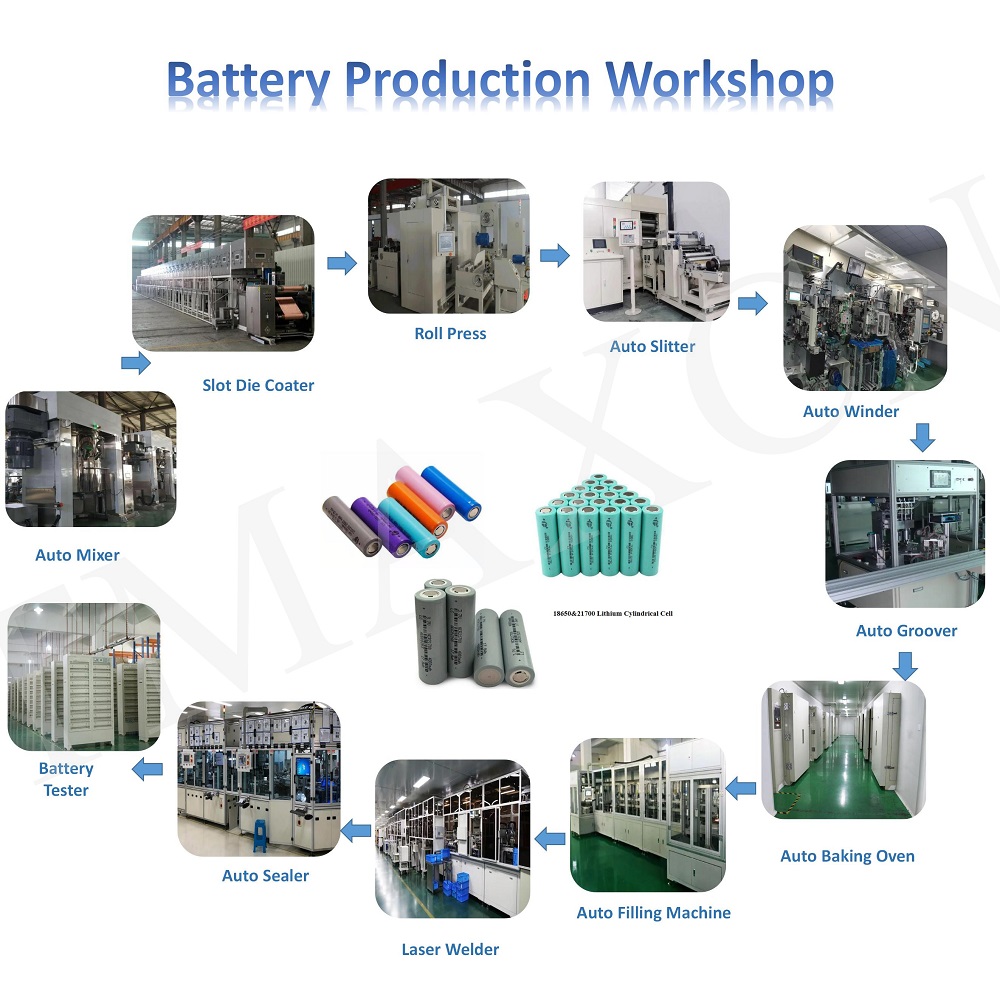18650 Assembly Line: Production Process, Equipment, and Safety Considerations
The 18650 lithium-ion battery is a popular and versatile energy storage solution used in a variety of applications, from portable electronics to electric vehicles. To meet the growing demand for 18650 batteries, manufacturers have developed specialized assembly lines that optimize the production process for efficiency, quality, and safety.
Production Process:
The 18650 assembly line typically consists of the following steps:
Electrode preparation: This process involves cutting and coating thin sheets of cathode and anode materials, usually made of lithium cobalt oxide and graphite, respectively. The coated sheets are then dried and rolled into electrode pairs.
Cell assembly: The electrode pairs are assembled into a cylindrical cell with a separator in between to prevent short circuits. The cell is then filled with electrolyte and sealed.
Formation: The cell undergoes a formation process where it is charged and discharged several times to stabilize its performance and capacity.
Testing and inspection: The finished cells are tested and inspected to ensure they meet the required specifications for voltage, capacity, and safety.
Equipment:
The 18650 assembly line requires specialized equipment to carry out each step of the production process. Some of the key equipment includes:
Coating machine: A machine used to coat the cathode and anode materials with a thin layer of active material.
Battery Electrode Slitter: A machine used to cut the coated sheets into electrode strips of the required size.
Battery winding machine: A machine used to wind the electrode strips into electrode pairs.
Cell assembly machine: A machine used to assemble the electrode pairs into a cylindrical cell.
Formation machine: A machine used to charge and discharge the cell during the formation process.
Testing equipment: Equipment used to test the finished cells for voltage, capacity, and safety.
Safety Considerations:
Working with lithium-ion batteries can be dangerous if proper safety protocols are not . Some important safety considerations for the 18650 assembly line include:
Proper training: All workers should receive proper training on the handling and assembly of lithium-ion batteries.
Personal protective equipment: Workers should wear appropriate personal protective equipment, such as gloves and safety glasses.
Ventilation: The assembly area should be well-ventilated to prevent the buildup of flammable gases.
Fire prevention: Fire extinguishers should be readily available in case of a fire.
Quality control: Regular quality control checks should be performed to ensure the batteries are manufactured to the required specifications.
Conclusion:
The 18650 assembly line is a complex and specialized production process that requires careful attention to detail and adherence to strict safety protocols. With the right equipment and training, manufacturers can produce high-quality 18650 batteries that meet the demands of a variety of applications.

 en
en fr
fr de
de ru
ru es
es pt
pt ko
ko tr
tr pl
pl th
th








 IPv6 network supported
IPv6 network supported